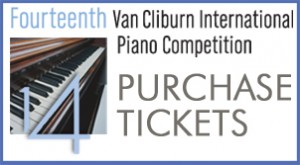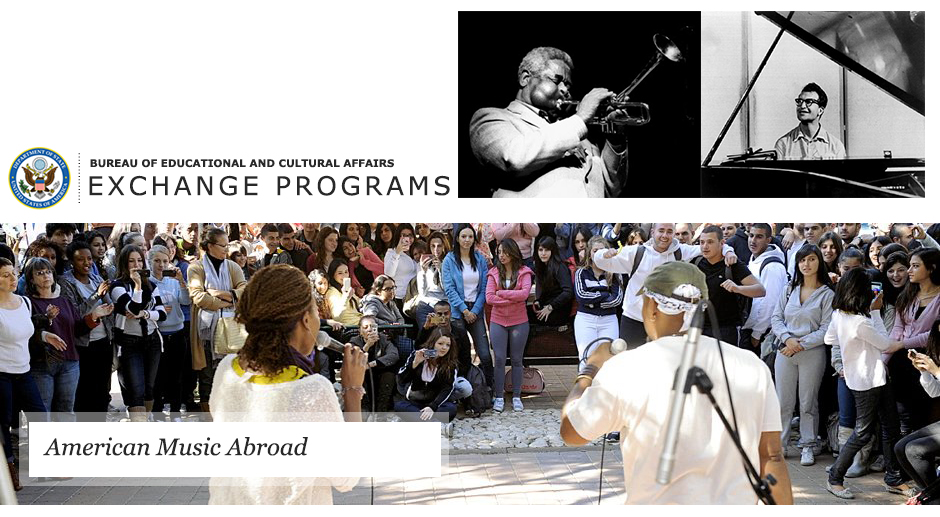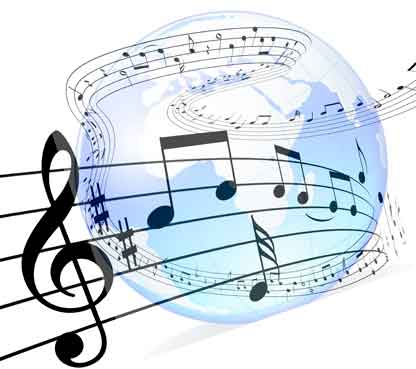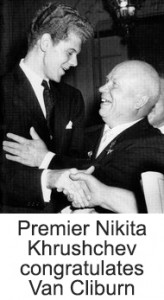Angela K. Brown, writing in the HuffPost Arts & Culture (online, February 27, 2013), reported on the recent passing of vaunted classical pianist Van Cliburn at age 78 from bone cancer. Texas-born, Julliard trained Van Cliburn is best known for winning the first International Tchaikovsky Competition in Moscow just six months after the Soviets’ launch of Sputnik embarrassed the U.S. and inaugurated the space race. Van Cliburn was 23-years old at the time.
She wrote:
For a time in Cold War America, Van Cliburn had all the trappings of a rock star: sold-out concerts, adoring, out-of-control fans and a name recognized worldwide. He even got a ticker-tape parade in New York City. And he did it all with only a piano and some Tchaikovsky concertos. The celebrated pianist played for every American president since Harry Truman, plus royalty and heads of state around the world. But he is best remembered for winning a 1958 piano competition in Moscow that helped thaw the icy rivalry between the United States and the Soviet Union.
. . . .
But the win also showed the power of the arts, creating unity despite the tension between the superpowers. Music-loving Soviets clamored to see him perform. Premier Nikita Khrushchev reportedly gave the go-ahead for the judges to honor a foreigner: “Is Cliburn the best? Then give him first prize.”
 Van Cliburn’s accomplishment—his practice ethos was apparently legendary—and subsequent other triumphs are testimony to the “power of the arts” on the stage of world politics. It is also exemplary of consequences from such a triumph. For example, the quadrennial Van Cliburn International Piano Competition, widely recognized as one of the world’s most important, was organized by a group of music teachers and citizens from Fort Worth, Texas in 1962 to commemorate Van Cliburn’s historic achievement and is dedicated to the discovery of the world’s finest pianists. The Van Cliburn International Piano Competition will present the fourteenth edition May 24 -June 9, 2013, at Fort Worth’s Bass Performance Hall.
Van Cliburn’s accomplishment—his practice ethos was apparently legendary—and subsequent other triumphs are testimony to the “power of the arts” on the stage of world politics. It is also exemplary of consequences from such a triumph. For example, the quadrennial Van Cliburn International Piano Competition, widely recognized as one of the world’s most important, was organized by a group of music teachers and citizens from Fort Worth, Texas in 1962 to commemorate Van Cliburn’s historic achievement and is dedicated to the discovery of the world’s finest pianists. The Van Cliburn International Piano Competition will present the fourteenth edition May 24 -June 9, 2013, at Fort Worth’s Bass Performance Hall.
The transcendent power of the arts—in this context, the power of music—is also evident in the world of jazz. This 2006 report from former National Endowment for the Arts Director Dana Gioia:
In 1956, with the guiding support of Secretary of State John Foster Dulles, the U.S. Department of State sent the nation’s finest jazz musicians abroad as goodwill representatives in a conscious effort to symbolize America’s commitment to freedom. The Jazz Ambassadors program was launched at the bitterest point in the Cold War to bring the best of American culture to the rest of the world. The program not only focused on Iron Curtain nations but also the Third World, where many developing countries were exploring Marxism as a possible political identity. The first Jazz Ambassador was trumpeter Dizzy Gillespie, and two years later [Dave] Brubeck joined the ranks that would eventually include Louis Armstrong, Duke Ellington, Thelonious Monk, Benny Goodman and Miles Davis. These musicians reached audiences in the millions, not only performing but also meeting with heads of state as well as thousands of everyday citizens through the international language of music. Meanwhile at home they helped push the Eisenhower, Kennedy, Johnson and Nixon Administrations to expand civil rights.
 The Jazz Ambassadors program has evolved into the “American Music Abroad” program. According to the program’s web site: “The bands selected to tour with the American Music Abroad program hail from throughout the United States, and their musical talents reflect the diversity of the American musical landscape. For the 2012-2103 season, musicians from a wide range of traditional American musical disciplines applied for the program. The American Music Abroad program received nearly 300 applications from over 40 states, DC, Puerto Rico and the U.S. Virgin Islands. The genres ranged from Blues, Bluegrass, Native American, Latino, Cajun, Country, Folk, Gospel, Broadway Musical Theater, Hip Hop/Urban, Indie Rock, Jazz, Punk, R&B and Zydeco.
The Jazz Ambassadors program has evolved into the “American Music Abroad” program. According to the program’s web site: “The bands selected to tour with the American Music Abroad program hail from throughout the United States, and their musical talents reflect the diversity of the American musical landscape. For the 2012-2103 season, musicians from a wide range of traditional American musical disciplines applied for the program. The American Music Abroad program received nearly 300 applications from over 40 states, DC, Puerto Rico and the U.S. Virgin Islands. The genres ranged from Blues, Bluegrass, Native American, Latino, Cajun, Country, Folk, Gospel, Broadway Musical Theater, Hip Hop/Urban, Indie Rock, Jazz, Punk, R&B and Zydeco.
The music flow—America to the world—is in no way one-sided. At the January 2013 annual meeting of the Association of Performing Arts Presenters (APAP) in New York City what was startlingly clear was the number of “international” exhibitors. I have attended the last three APAP conferences. This last conference made very apparent the presence of performing arts exhibitors—the vast majority from the world of music—from around the world. It felt that the international exhibitors were in the vast majority. It was yet another example of an increasingly global trend of music of all kinds crossing boundaries—east to west and vice versa, north to south, and vice versa.
Among the many international exhibitors, a small representative sample included:
- 420 People, The Czech Republic
- Brasil Music Exchange
- Chamber Orchestra Kremlin (Russia)
- Culture Ireland
- Japan Foundation
- Jo Stromgren Kompani (Norway)
- Latino Entertainment
- Shaoxing Grand Theatre (Shaoxing, China)
- Station Bleue (Canada)
- Swedish Performing Arts for an International Audience
- The Mexican Cultural Institute
- Zespol Piesni I. Tanca (Poland)
 The striking presence of dozens upon dozens of international “arts” exhibitors at APAP 2013 is the result of what? An improving world economy? Reports from Europe and the United States do not indicate rapidly improving economies, the rise of the American stock market as measured by the Dow Jones Industrial Average to near historical record levels, notwithstanding. On the contrary, America’s economy can still be perceived as “fragile,” while Europe’s economy is still in a state of flux given economic challenges in Greece, Italy, Spain, and other states in the EuroZone.
The striking presence of dozens upon dozens of international “arts” exhibitors at APAP 2013 is the result of what? An improving world economy? Reports from Europe and the United States do not indicate rapidly improving economies, the rise of the American stock market as measured by the Dow Jones Industrial Average to near historical record levels, notwithstanding. On the contrary, America’s economy can still be perceived as “fragile,” while Europe’s economy is still in a state of flux given economic challenges in Greece, Italy, Spain, and other states in the EuroZone.
A more reasonable explanation is that APAP has apparently been more aggressive in bringing international exhibitors to New York City for its annual event. On the other hand, these same exhibitors look to the American “arts” market (as part of the world’s leading economy) as a must-place-to-be outside their own country’s borders.
In essence, from Van Cliburn’s 1958 triumph in Russia and the unintended positive consequences on the political relationship between the United States and the former Soviet Union, to the readily apparent international vibe at the recent APAP conference and the consequent attendant mixing of cultures, the “arts,” particularly the musical arts is a common thread that binds all cultures. Melody, harmony, rhythm, perhaps especially rhythm is a human universal. The human voice and man-made instruments of all kinds are a cultural constant, regardless of place.
Organized sound—i.e., music, regardless of genre—has the potential to transcend geographic, social and political borders. In the United States, especially, the “arts” need to be given as much emphasis as the sciences and engineering. Better and more improved technology might address issues of world competition, but music and the related fine and performing arts have the greater potential to engender cooperation and collaboration on a local and international scale.
Please write to me at meiienterprises@aol.com if you have any comments on this or any other of my blogs.
Eugene Marlow, Ph.D.
March 4, 2013
© Eugene Marlow 2013


